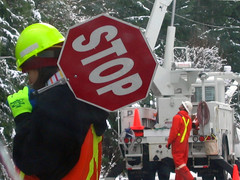24V Cordless Drill: What to Know Before You Buy
Buying a 24V cordless drill represents a significant expense. True, it isn’t as expensive as a fast automobile or a new condo, but a top quality 24 Volt Cordless drill will still set you back in excess of $350 (approx £225). For many workmen this is a significant proportion of a weekly wage packet. Even if you are buying for a business you still want to see a good return on your investment. You can of course buy cheaper models than this, but sometimes you get what you pay for and buying a power tool is no exception.
(Edit 2015: Black and Decker appear to no longer sell a model in this range, SDS Max or otherwise. Best advice appears to be to check reviews on Amazon for replacement items, but be wary of fake review writers – compare article comment with other comments by same author. A helpful review by real users will often show “verified purchase” and make mention of any problem the user experienced, not just the sales and purchase information!)
If you are buying an item like this then most likely you are looking for max power as well as freedom of movement and flexibility. The good news is that almost any cordless power tool of this rating will supply what you seek. The 24 volt option is still comparatively new to manufacturers and this means that most tools are modern in design, with all the benefits this brings. Accessories may still be limited in some ranges, investigate this before purchase.
What to Look for in a 24v Cordless Drill

Photo by axiepicsLook for a tool that offers rotary stop, or a hammer only setting. On a drill this powerful it would be a complete waste if it couldn’t also be used for chasing or light demolition work. SDS (or SDS Max) is a standard fitting these days on products of this rating, but check and make sure anyway.
Two settings (high and low) are desirable to allow for more choice over power output (rotation speed, torque or hammer impact may be specified separately on certain models). This will aid with control on finer work or on more delicate materials or fixings. Usually lower rotary speeds means higher torque on that setting, but check and see if this is the case. A variable speed trigger is an advantage, but might not be a necessity, depending on how you plan to use your purchase. These beasts are too strong to realistically use as a conventional driver, but that does not mean it should not come with a reverse gear. A reverse function can aid in loosening all sorts of fixings and might save you having to get a cordless impact wrench out to do the job instead.
Any “kit” or accessories type product should include two lithium or ion type batteries and a charger. A case isn’t 100% necessary, but is a nice addition if it comes as part of the price. The reason that two batteries are an absolute must is that with a spare battery you can continue to work using one while the other is on charge. This saves amazing amounts of time as even fast chargers often take two hours to reach full capacity. Although the whole concept of cordless power tools is one of mobility, it is a drag to carry a 7lb or so dead weight around if it needs a fresh battery.
Any way you look at it a cordless 24v drill is a great investment. Most models have double the run time (before battery discharge) of an 18 volt lithium or ion equivalent model. This means more time at the job and less down time. With many models now outputting over 500in.lbs of torque the output is considerable too and compares favourably with the corded tools of yesterday. When the job calls for mobility and power, a professional 24v cordless drill is the right tool for the job.